Beginner’s Guide to Natto
Curious about natto? Learn about this traditional Japanese superfood – what it is, how it’s made, and how to eat it.
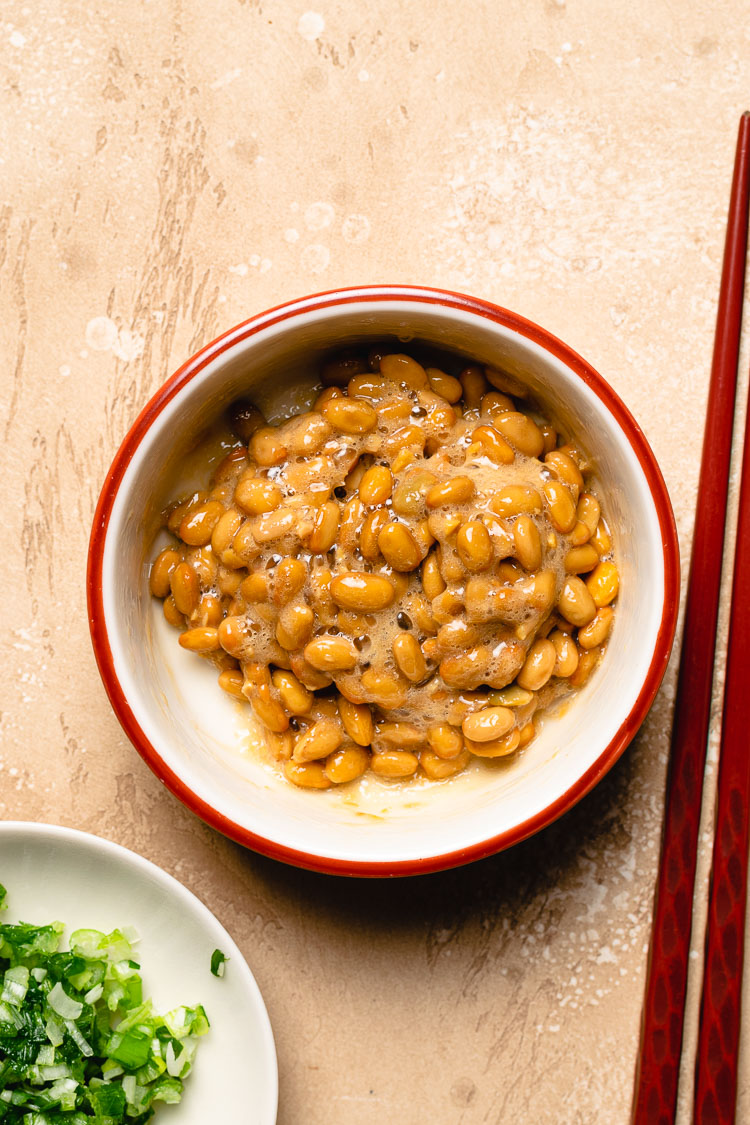
What is Natto?
Natto is a traditional Japanese food made from fermented soybeans. It has a sticky, slimy texture and a pungent smell, so many people don’t like it the first time they try it. Japanese people often grow up eating natto, so they develop a taste for it when they’re young. Natto is a common breakfast food in Japan (served alongside rice, tsukemono (Japanese pickles), and miso soup) and is a rich source of nutrients.
Health Benefits
Natto contains an abundance of nutrients that can promote health benefits such as improved digestion (probiotics), stronger bones (calcium and vitamin K2), a reduction in cholesterol and blood pressure (fiber, probiotics, K2, nattokinase), and a stronger immune system (probiotics, vitamin C)1. More research is needed before strong conclusions can be made, but it’s clear that natto is incredibly nutrient-rich and most people would probably benefit from adding it to their diet (individuals on blood-thinning medication or with thyroid problems should consult their doctors first).
Vitamin K2 and Calcium
Natto is one of the rare plant sources of Vitamin K2, which plays an essential role in blood clotting and bone health. Vitamin K2 activates the calcium-binding actions of two proteins – matrix GLA protein and osteocalcin. Essentially, Vitamin K2 helps bring calcium into the bones, and studies suggest that Vitamin K2 can help prevent osteoporosis. 2
Branched Chain Fatty Acids
Natto also contains branched-chain fatty acids (BCFAs) – usually found in dairy in Western diets – which play a role in the development of our gut microbiome. While more research needs to be done on BCFAs, some research indicate potential health benefits such as weight maintenance, energy homeostasis, improved insulin sensitivity, and reductions in inflammation, cancers, and metabolic disorders3.
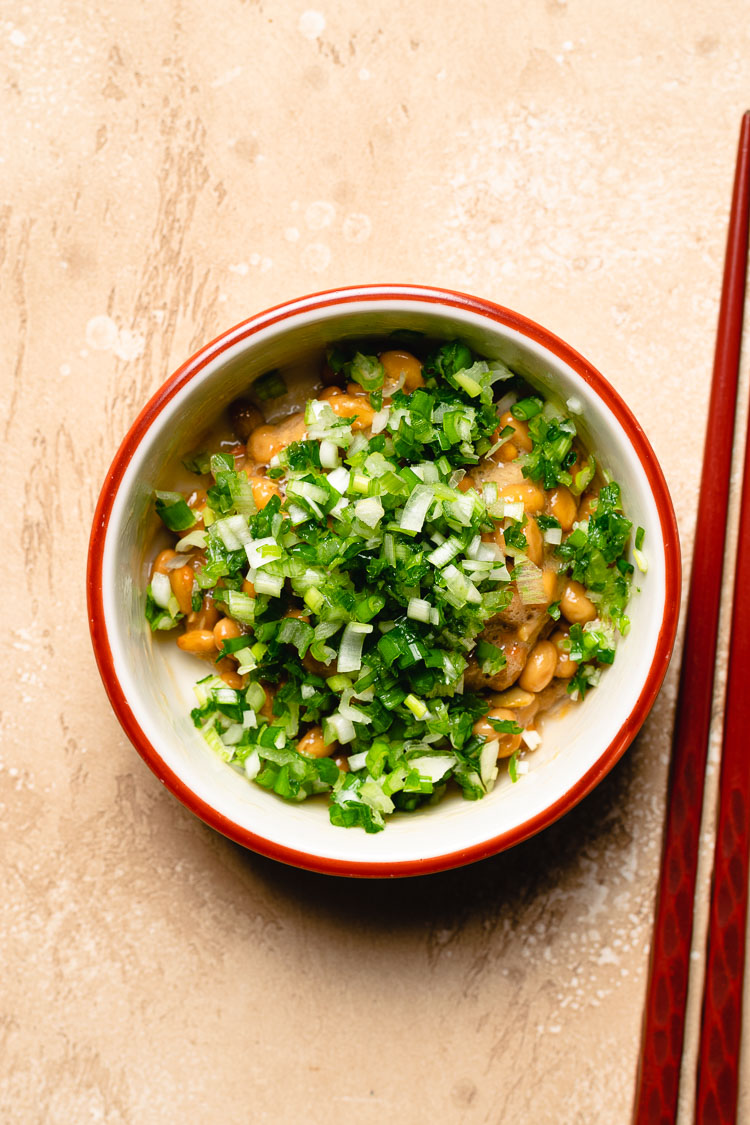
How is Natto Made?
The production process for natto is as follows:
- Soak soybeans ⟶ The soybeans soak up water and will double in size as they sit. This can take anywhere from 6-24 hours depending on the climate/season.
- Steam soybeans ⟶ The soybeans need to be steamed until soft, about 4-6 hours (a pressure cooker can be used to shorten the time to about 30 minutes).
- Mix soybeans with natto-kin (Bacillus subtilis) ⟶ This bacterium, called natto-kin in Japanese, is what makes natto stringy/sticky. In the old days, natto was made by wrapping steamed soybeans in rice straw, which naturally contains natto-kin.
- Ferment ⟶ The soybeans are left to ferment at around 40°C for 18-24 hours.
- Refrigerate ⟶ After fermenting, the natto is transfered to a refrigerator to age for at least a day and up to one week. During this time the flavor develops more and the natto becomes more stringy.
Where to Buy
Natto can be found in the frozen aisle of Japanese/Asian markets. You may be able to find refrigerated natto near the tofu in your grocery store, but usually it is sold frozen in styrofoam containers, with 3-4 containers per pack.
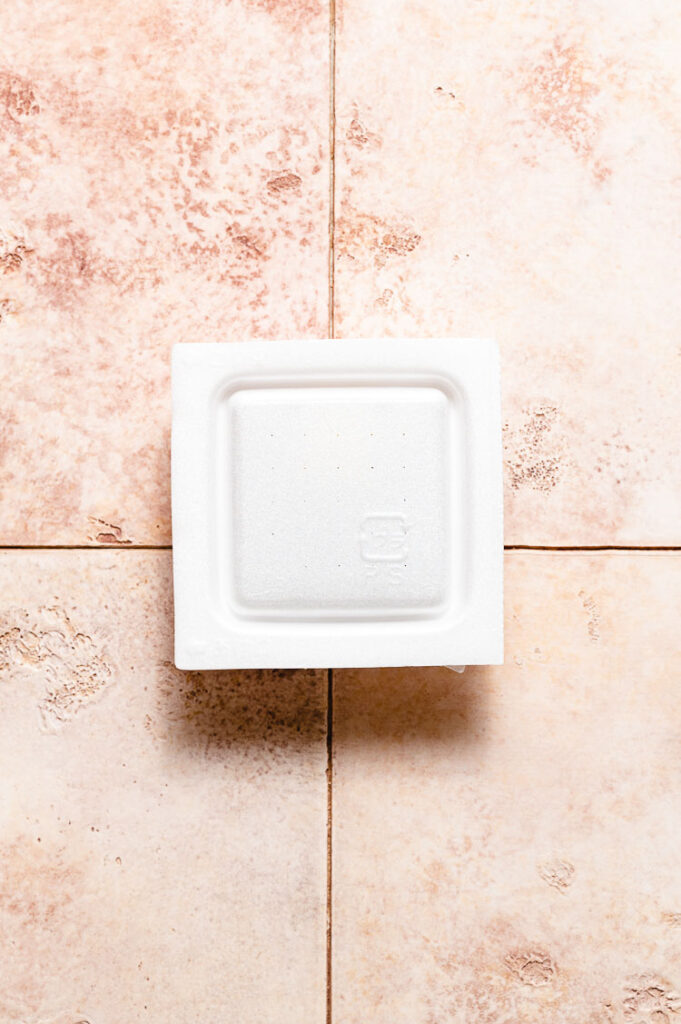
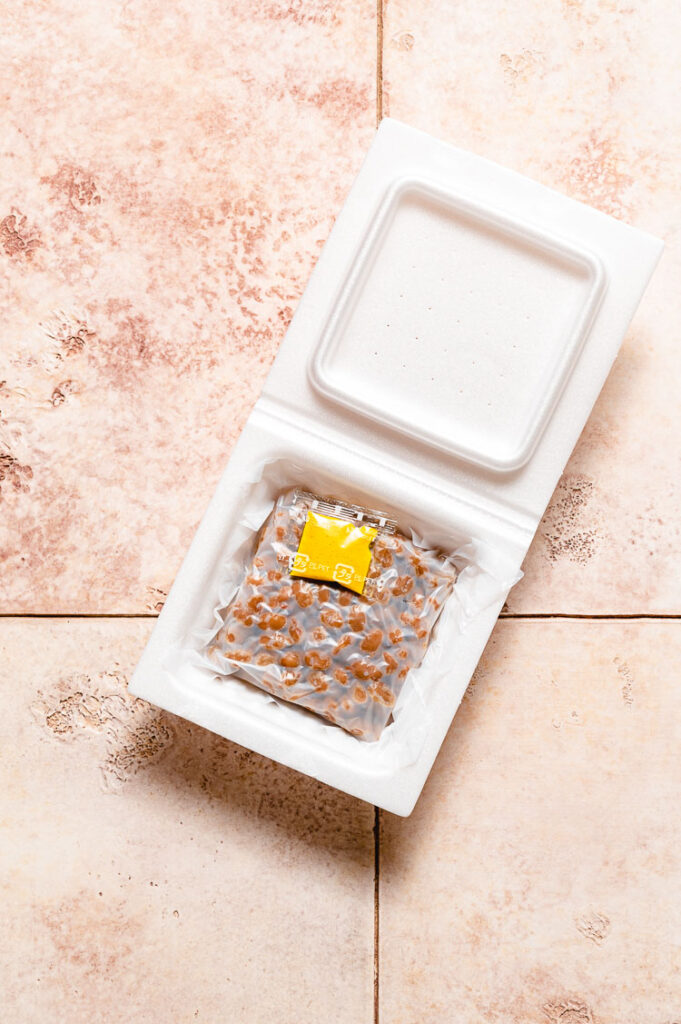
How to Prepare Natto
At its most basic form, natto is simply seasoned with a sauce (called tare in Japanese) that usually comes in the natto container. Most people will just add the sauce to the natto and mix it a few times before eating, but experts agree that the best way to prepare natto is to first mix it on its own without any seasonings added. The more you mix natto, the more the umami flavor comes out. One article found 400 times to be the optimal amount4. This article also recommends you add the sauce in small increments every 100 times. Of course, this is very time consuming and most people will not do this, but the takeaway is that the more you mix natto, the better it will taste!
After mixing the natto, then you add the sauce (or add in increments as mentioned above), and mix again. Finally, add karashi (Japanese mustard) and green onions, or any other condiment you want (see below for a list of common pairings).
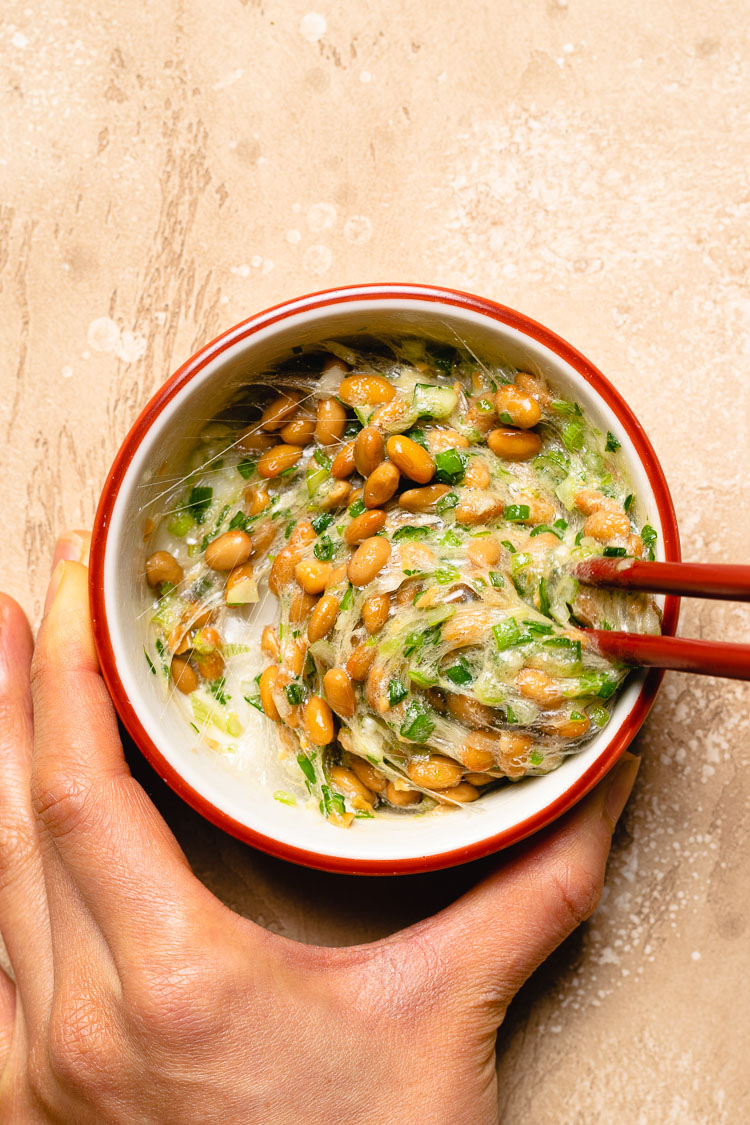
How to Eat Natto
When you buy natto at the store, the containers usually include a small packet of tare (sauce) and sometimes also a small packet of karashi. Natto tare contains fish, so if you’re vegan you’ll have to make your own sauce or just use soy sauce. You can buy natto packs that don’t contain any seasonings, which is what I recommend if you don’t eat fish, so you don’t waste all the sauce packets. It might be written in Japanese on the container, so it usually says something like “タレなし” or “たれ•からしは付いておりません”.
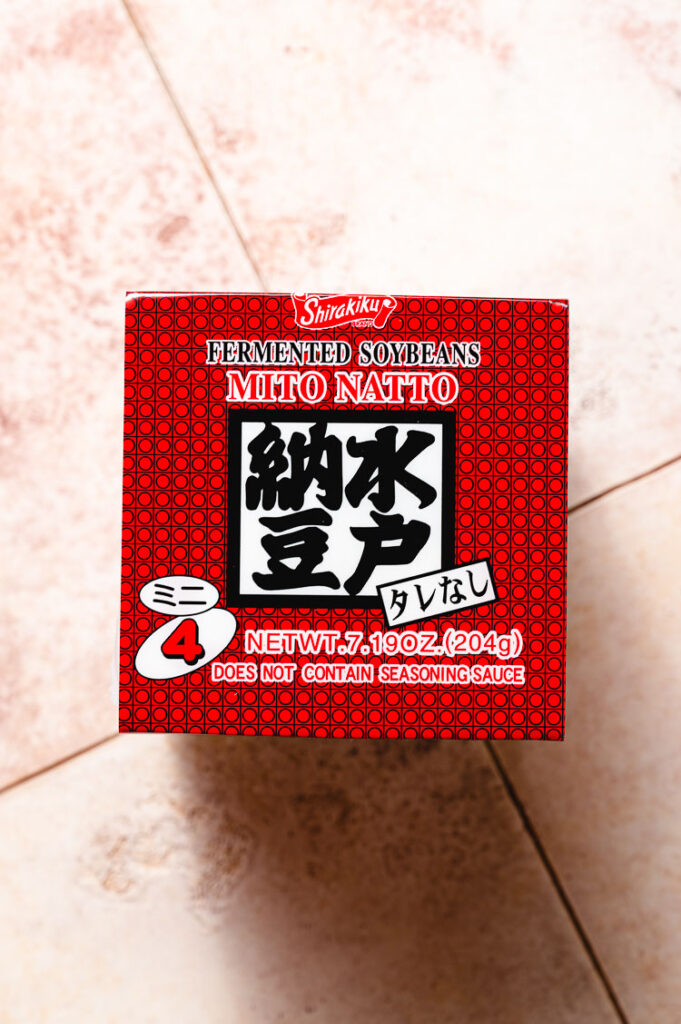
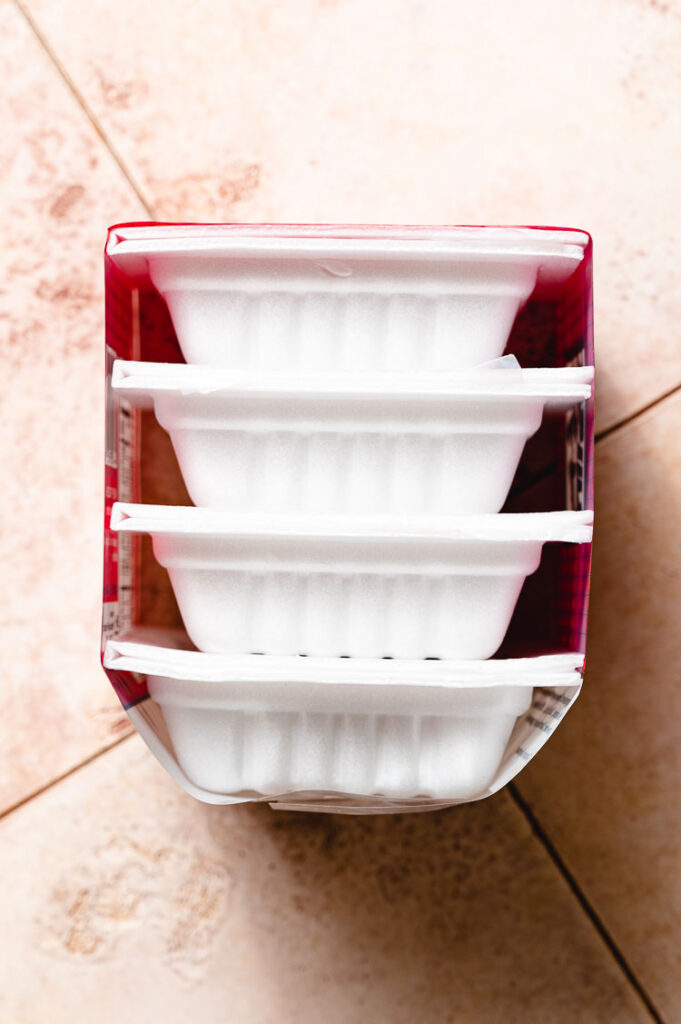
Natto tare is basically a dashi-infused soy sauce. You can make your own with soy sauce, mirin, and dashi granules, or just use soy sauce if you’re feeling lazy. I also like to use my green onion sauce for more diverse flavors (usually when I’m adding other ingredients to my natto like tofu or cucumbers). But you can’t go wrong with soy sauce, karashi, and chopped green onion.
Ingredient Pairings
Natto is delicious on its own but also pairs well with a myriad of other ingredients like:
- green onions
- soy sauce
- miso
- ginger
- nori/seaweed
- kimchi
- avocado
- toasted sesame oil
- okra
- enoki mushrooms
- yamaimo
- soft tofu
- umeboshi
- mayonnaise
- cheese
- egg with runny yolk – in Japan they often mix in raw egg with natto
Cooking with Natto
Different ways to cook with natto include:
- over rice (donburi)
- in sushi
- mixed into pasta
- over cold udon
- with Japanese curry
- in salads
- in miso soup (called natto jiru 納豆汁)
- mixed with soft/silken tofu
- on top of hiyayakko (chilled soft/silken tofu)
- in fried rice
- on cheese toast
The options are endless, so once you’ve developed a taste for natto, you can mix and match using the ideas above to create your own favorite natto dish!

Recipes Using Natto (more to come)
- Natto Gohan (Natto over Rice)
- Natto Negi Maki (Natto and Green Onion Roll)
- Natto with Kimchi and Enoki Mushrooms
- Natto Salad with Soft Tofu and Cucumber
- Natto Jiru (Natto Miso Soup)
Natto Fun Facts
Why is natto so sticky?
The sticky, stringy characteristic of natto (known as neba-neba ネバネバ in Japanese) is where a lot of the nutrients are found. During the fermentation and aging process, the natto bacterium breaks down the proteins in the soybeans into amino acids, including glutamic acid (which makes glutamate, the compound responsible for umami flavor). The glutamic acid forms long, folded chains that result in natto’s sticky strands.
Kansai people don’t like natto?
It’s often said that people from the Kansai region of Japan (the south-western half of Japan including Osaka, Kyoto, and Kobe) don’t like natto. This is because the dietary culture of the Kansai region didn’t include natto back in the old days. Natto originated as a protein source for inland mountain communities who didn’t have easy access to meat and fish. The western side of Japan had access to the ocean and the flow of goods, so they didn’t need to rely on natto as a protein source. But these days more and more people in the Kansai region are eating natto, likely for its numerous health benefits, and you can usually find natto at convenience stores and supermarkets (something that was pretty rare in the Kansai region 30 years ago).
There are different types of natto, characterized by the size/shape of the soybean used.
-Otsubu 大粒 is made from big beans and doesn’t get as sticky as smaller beans. Otsubu is best served on its own as a side dish or in miso soup (nattojiru).
-Kotsubu 小粒 is made from small beans and is more sticky. Kotsubu is best served with rice.
-Hikiwari ひきわり is made from crushed beans. It’s best to use hikiwari natto when cooking since the texture isn’t as chunky.
Save for later!
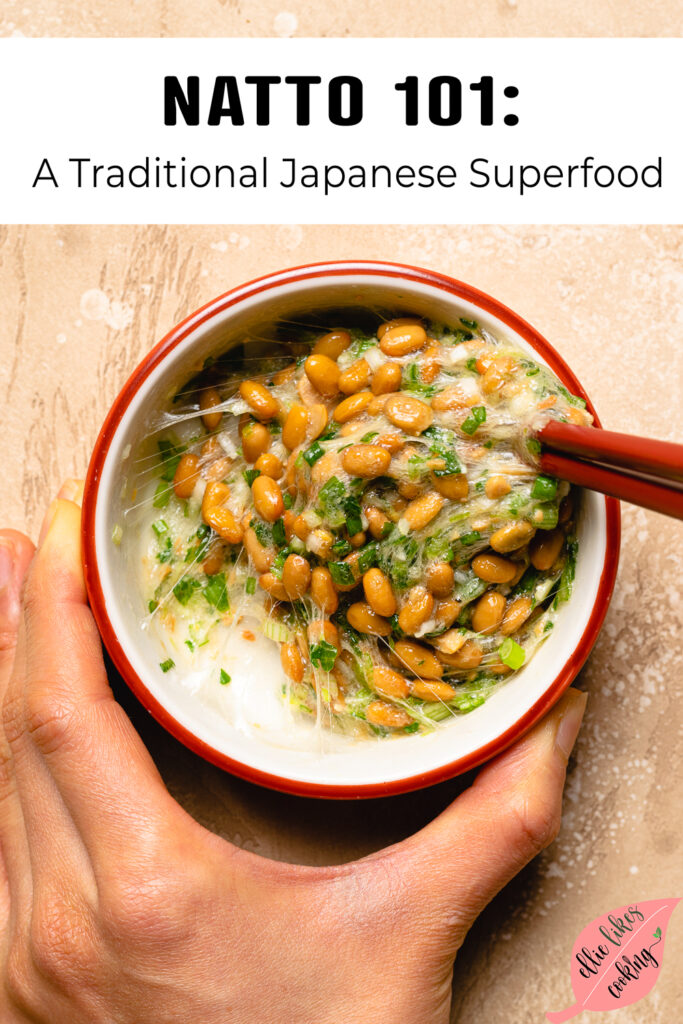
References
- Petre, Alina. “Why Natto Is Super Healthy and Nutritious.” Healthline, Healthline Media, 31 Mar. 2017, https://www.healthline.com/nutrition/natto.
- Petre, Alina. “Why Natto Is Super Healthy and Nutritious.” Healthline, Healthline Media, 31 Mar. 2017, https://www.healthline.com/nutrition/natto#TOC_TITLE_HDR_5.
- “Branched-Chain Fatty Acids: An Underexplored Class of Dairy Derived Fatty Acids.” New England Dairy, 26 Oct. 2021, https://www.newenglanddairy.com/blog-post/branched-chain-fatty-acids/.
- “美味しくて栄養効果も高まる!納豆の食べ方を徹底解説: ピントル.” 納豆専門ページ | ピントル, https://food-drink.pintoru.com/natto/how-to-eat-natto/.

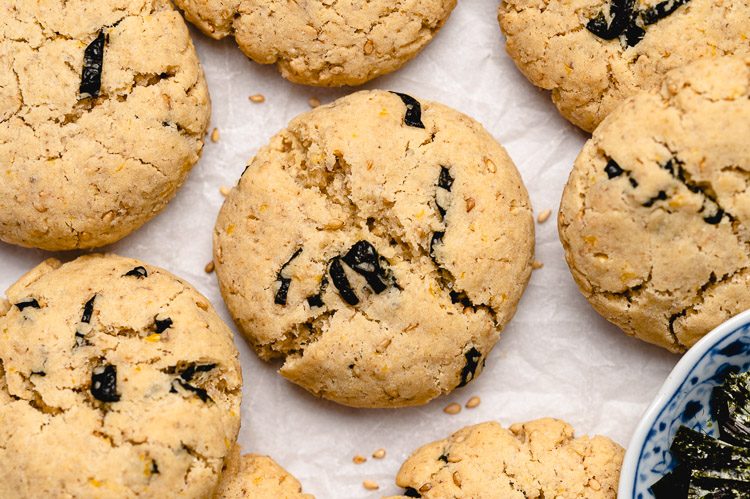


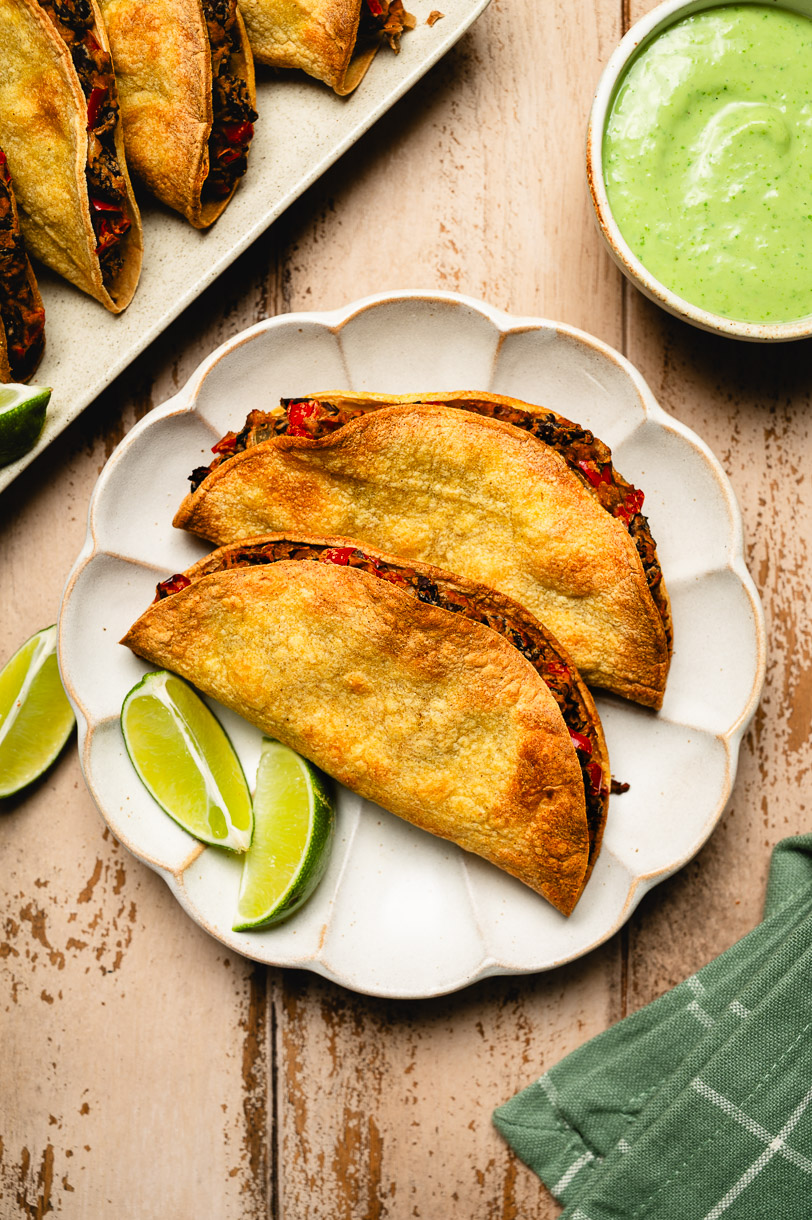
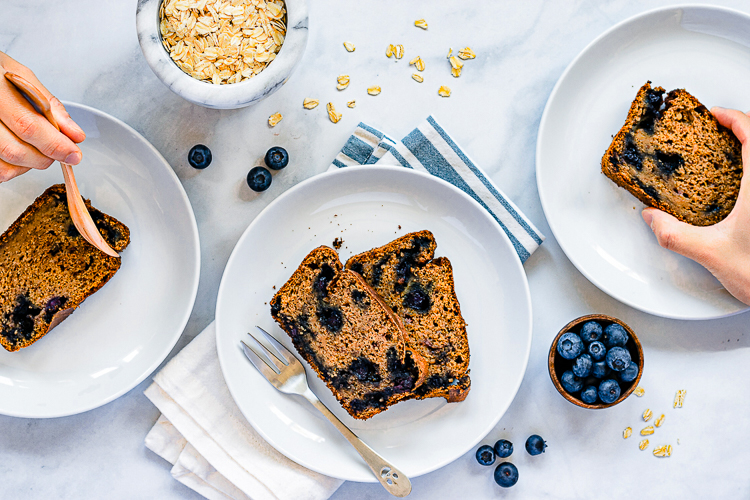
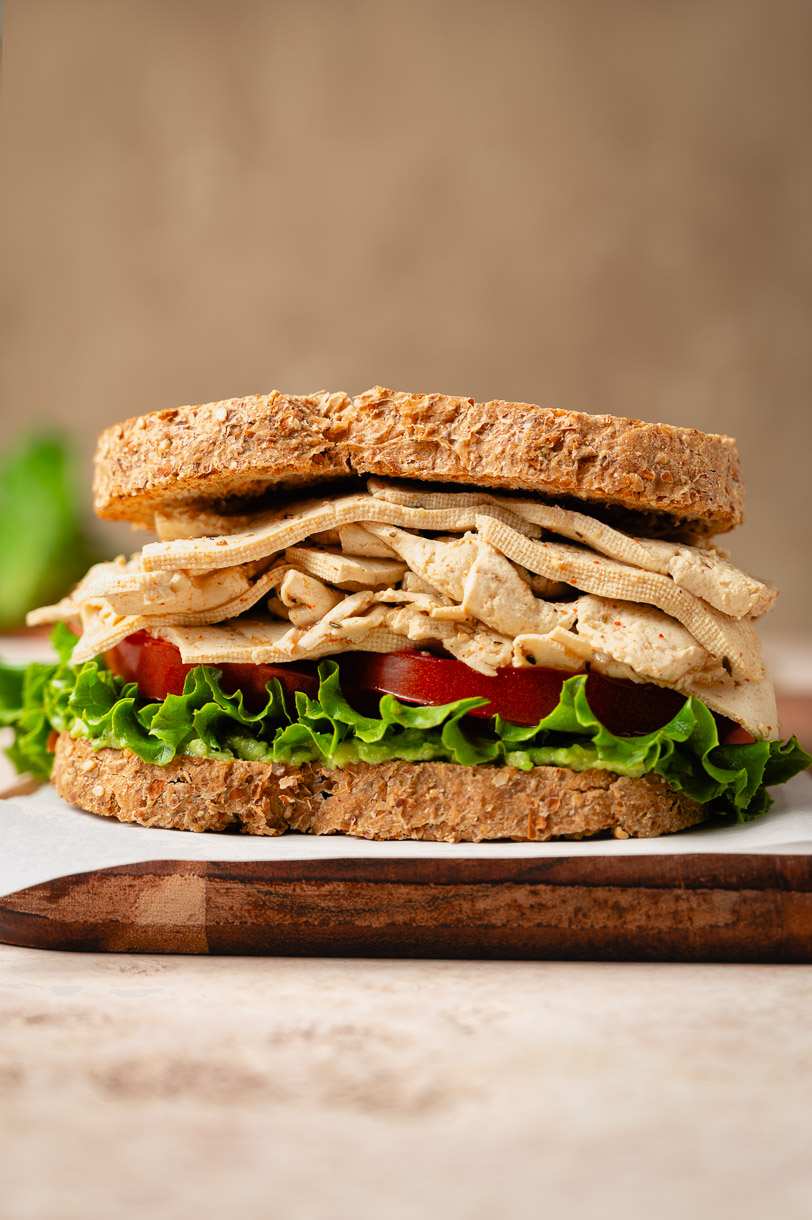
Are there pre-made natto servings, such as frozen-dinner volumes that may be microwaved or otherwise heated?
Natto is typically sold in single serving packs that are ready to eat after thawing or microwaving (be aware it may stink up your microwave). They come with little sauce packets that you can just mix in after heating. So they’re a great quick and easy meal when paired with rice!